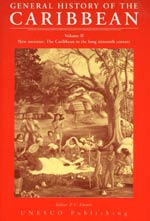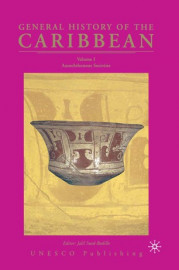DL Services SPRL
Rue Vanderborght 24
1081 Brussels Belgium
info@dl-servi.com
General History of the Caribbean Volume III: The Slave Societies of the Caribbean
Disponible
Volume III: The Slave Societies of the Caribbean
This six-volume UNESCO History of the Caribbean attempts to integrate the historical experience of its peoples and societies from the earliest times to the present. This third volume (the first to be published) begins with an overview of the slave trade, African slavers and the demography of the Caribbean up to 1750.
Edited by Franklin W. Knight
Multiple History series
Book, 380 pages, illustrations, figures, maps
Format: 23.5 x 15.7 cm (paperback)
1997
Génération de facture pro forma disponible dans le panier.
This six-volume UNESCO History of the Caribbean attempts to integrate the historical experience of its peoples and societies from the earliest times to the present. The work provides a comprehensive history, centered on the people and the landscape, written as much as was possible by Caribbean historians. It gives an account of what was common to all as well as what was peculiar to some, and affirms the cultural identity of the region.
The choice of themes has been determined, in part, by the decision to write a history of the region which is more than the sum of narratives of the islands and the lands adjacent and, in part, to avoid the whole work being dominated by the experiences common to the entire region through the primacy of sugar, slavery and the consequent military and political presence of the European powers. Space was found for peoples, societies, cultures and activities, less important than sugar and slavery, but significant enough to have left their mark on the contemporary culture of the Caribbean.
This third volume (the first to be published) begins with an overview of the slave trade, African slavers and the demography of the Caribbean up to 1750. Scholars go on to study the demographic and social structure of the Caribbean slave societies in the eighteenth and nineteeth centuries, as well as their evolution and significance. Social and political control in the slave society and forms of resistance and religious beliefs are also covered, as well as Maroon communities in the circum-Caribbean. The phenomenon of pluralism and creolization is analysed. The volume closes with a study of the distintegration of the Caribbean slave systems.


















